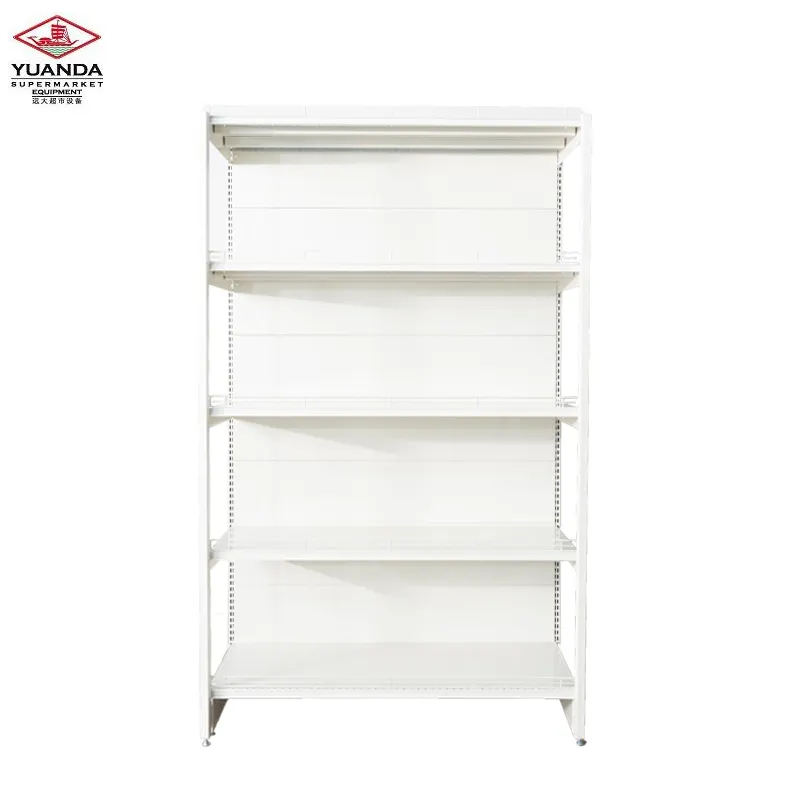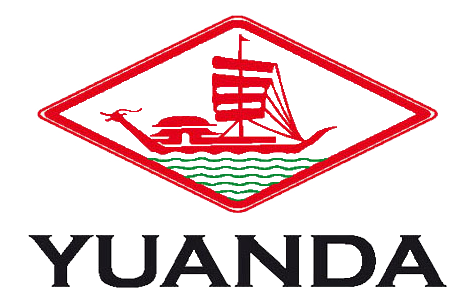Superior Material Composition for Enhanced Durability
High-Grade Steel and Reinforced Polymers
Supermarket shelves made from high quality steel stand up remarkably well against daily wear and tear, which explains why stores keep coming back to this material time after time. Steel doesn't just last longer; it holds together even when stacked full of heavy goods, something that matters a lot in those bustling checkout zones where shelves get bumped constantly. Stores also incorporate reinforced plastic materials because they're lighter on the hands during installation yet still tough enough to handle regular use. The combination works wonders for retailers needing both sturdiness and ease of handling across different parts of the store layout. Real world testing shows these composite shelves can hold way more than what's typically placed on them, giving supermarket managers peace of mind knowing their displays won't collapse mid-shopping trip.
Anti-Corrosion Coatings and Finishes
Coatings that fight corrosion help metal surfaces last much longer by stopping rust from forming, especially important in those damp areas inside supermarkets where moisture builds up constantly. The better quality coatings do more than just keep water out they actually strengthen the structure over time, so most stores can't operate without them these days. Plus, newer types of finish make those metal shelves look nicer too, giving the store a cleaner appearance while still protecting against scratches and chemicals that might otherwise wear down the surface.
Research indicates that shelves treated with anti-corrosion coatings can last up to five times longer than their untreated counterparts, ensuring they remain functional and aesthetically pleasing for years. Incorporating such treatments offers a significant advantage in maintaining the durability and longevity of supermarket fixtures.
Robust Structural Design and Engineering
Reinforced Welding Techniques
Modern welding approaches such as TIG and MIG have made a real difference in how strong supermarket shelves actually are. The joints created this way tend to hold up much better over time, which means the whole shelf lasts longer without breaking down. Supermarkets often deal with heavy items stacked high, so it makes sense why structural failures would be a concern. Engineering tests show that when welds get properly reinforced, they can handle about 30% more weight before giving way. That kind of improvement matters a lot for stores where shelves need to stand up day after day against constant restocking and customer traffic. Retailers benefit from both the extended lifespan of these systems and the fact that they perform consistently well even when subjected to all that daily wear and tear.
Load-Bearing Capacity and Weight Distribution
Good load bearing design helps spread weight throughout a structure instead of putting all the pressure on single spots. When weight is distributed properly, it makes shelves work better while keeping them from falling apart under heavy loads. Getting these calculations right matters a lot when trying to maximize what can be stored. Properly balanced shelves often end up holding around 20 percent extra stuff compared to ones that aren't designed as thoughtfully, but nobody wants to sacrifice safety just to fit more items on there. The numbers look good on paper, sure, but real world conditions matter too.
Surveys have consistently shown that supermarket shelves engineered for balanced weight distribution maintain stability and safety, which is fundamental in ensuring customer satisfaction and operational effectiveness. Such designs are key in maximizing storage solutions while adhering to safety standards.
Durability-Driven Features and Innovations
Adjustable and Modular Shelf Configurations
Adjustable shelves are revolutionizing supermarket designs by providing flexibility and enhancing usability. These shelves can be reconfigured to accommodate different product sizes, making them adaptable to changing inventory needs. Modular designs offer long-term durability, allowing changes without needing full replacements.
These systems make it much easier to rearrange things, which means stores don't have to replace shelves as often and save money on those costly renovations. The numbers back this up too adaptable shelving can really stretch out how long shelves last before needing replacement, cutting down on both the hassle of store closures for work and the cash spent fixing everything all the time. When supermarkets install these modular setups, they gain flexibility to change around their layout whenever needed, whether responding to latest sales promotions or shifting what customers want to see.
Impact-Resistant Edges and Reinforced Joints
The edges on supermarket shelves need to stand up to daily wear and tear, which is why impact resistance matters so much. When shoppers accidentally bump into displays or stock clerks move heavy items around, these reinforced edges help keep the whole structure intact while avoiding those unsightly dents and scratches. Shoppers tend to trust stores more when they see solid, well-maintained shelving units because it signals that products are stored properly and safely. What many don't realize is how important those hidden reinforced joints actually are. These connections between shelf sections can take a real beating over time, especially during restocking hours. Without proper reinforcement, joints simply give way after repeated stress, leading to collapsed displays and lost merchandise. Most retailers find that investing in quality reinforcement pays off handsomely in the long run as their display systems last significantly longer than cheaper alternatives.
Industry reports highlight that impact-resistant shelving can reduce maintenance costs by up to 25%, providing a significant financial advantage for retailers. By integrating these features, shelf manufacturers are aiding supermarkets in curbing continual repair expenses, thereby boosting operational efficiency and reliability.

Sustainability and Long-Term Durability
Recycled and Eco-Friendly Materials
In the quest for sustainability, using recycled and eco-friendly materials plays a pivotal role in reducing environmental impact while also lowering production costs. These materials allow businesses to demonstrate their commitment to responsible practices, aligning with the increasing consumer demand for greener choices.
Studies looking at product lifecycles indicate that using materials obtained through sustainable practices actually makes supermarket shelves last longer and helps companies cut down on waste too. We've seen this trend grow as customers start caring more about what happens to the planet. Supermarkets that build their displays with recycled content find they get double benefits: stronger structures that stand up to daily wear and tear, plus a smaller carbon footprint for the business. Many stores report better customer reactions when they visibly use green materials in their fixtures. The shelves look cleaner somehow, and people just seem happier shopping there knowing their local grocer is doing something good for the environment alongside keeping prices competitive.
Energy-Efficient Manufacturing Processes
Energy-efficient manufacturing is crucial in aligning production with sustainability goals; it reduces waste and lowers carbon footprints. This not only offers environmental benefits but also enhances the overall quality of materials used in supermarket shelves, ensuring they are durable and high quality.
Studies show companies that switch to energy efficient methods often cut their running costs by around 15%, which is pretty good money saved. The new tech being used in manufacturing actually makes materials stronger over time, so products tend to last longer without losing quality. When businesses start implementing these changes, they not only spend less on resources but also produce fewer emissions, something that fits right into today's green initiatives. Supermarkets especially should think about going this route since durable shelving systems mean less frequent replacements and lower waste generation. Plus, customers increasingly care about where their goods come from environmentally speaking, so investing now pays off down the road both financially and reputation-wise.
Maintenance Practices to Extend Shelf Lifespan
Routine Cleaning and Inspection Protocols
Establishing routine cleaning schedules is vital for maintaining shelf integrity and ensuring their longevity. Consistent cleaning not only preserves the physical durability of the shelves but also ensures hygienic conditions, which are crucial in environments like supermarkets where shelves are in constant use.
Checking things regularly matters just as much because it catches problems before they get big, which saves money on expensive fixes later and keeps products on shelves longer than expected. Some studies back this up, pointing out that sticking to maintenance routines actually adds about a third more time to how long items stay fresh looking. For stores trying to keep their shelves stocked properly, these simple checks mean fewer unexpected shutdowns and smoother day to day operations across all kinds of retail environments.
Repair vs. Replacement Guidelines
Knowing whether to fix something or replace it altogether makes all the difference in managing inventory without breaking the bank. For small stuff like shelves with frayed edges or fixtures that have come loose over time, simple repairs usually work just fine and keep money in the budget while cutting down on trash. But there comes a point where things fall apart too badly to justify fixing them anymore. Think about those storage racks that start leaning dangerously after years of heavy use or electrical components showing signs of wear that could lead to bigger problems down the road. At that stage, replacing equipment isn't just about getting rid of old gear but ensuring everyone stays safe and operations run smoothly without constant headaches from malfunctioning hardware.
Guidelines suggest that regular assessments can help businesses save up to 20% on shelving costs by preventing unnecessary replacements. By adopting these practices, retailers can manage their resources effectively, ensuring their supermarket shelves remain durable and visually appealing.
FAQ Section
What are reinforced polymers, and why are they used in supermarket shelves?
Reinforced polymers are materials that combine strength and resilience while being lightweight. They are used in supermarket shelves because they provide durability and ease of management compared to traditional materials.
How do anti-corrosion coatings enhance the durability of supermarket shelves?
Anti-corrosion coatings protect metal surfaces from rust and moisture, significantly extending their lifespan, especially in humid environments, ensuring they remain functional longer.
Why are energy-efficient manufacturing processes important in the shelf production industry?
Energy-efficient manufacturing reduces resource consumption, lowers carbon footprints, and ensures the production of high-quality materials, contributing to sustainability and financial savings.
When should supermarket shelves be repaired instead of replaced?
Minor damages like worn-out edges or loose fixtures can often be repaired to save costs, while significant structural failures may require full replacement to ensure safety and functionality.
Table of Contents
- Superior Material Composition for Enhanced Durability
- Robust Structural Design and Engineering
- Durability-Driven Features and Innovations
- Sustainability and Long-Term Durability
- Maintenance Practices to Extend Shelf Lifespan
-
FAQ Section
- What are reinforced polymers, and why are they used in supermarket shelves?
- How do anti-corrosion coatings enhance the durability of supermarket shelves?
- Why are energy-efficient manufacturing processes important in the shelf production industry?
- When should supermarket shelves be repaired instead of replaced?

